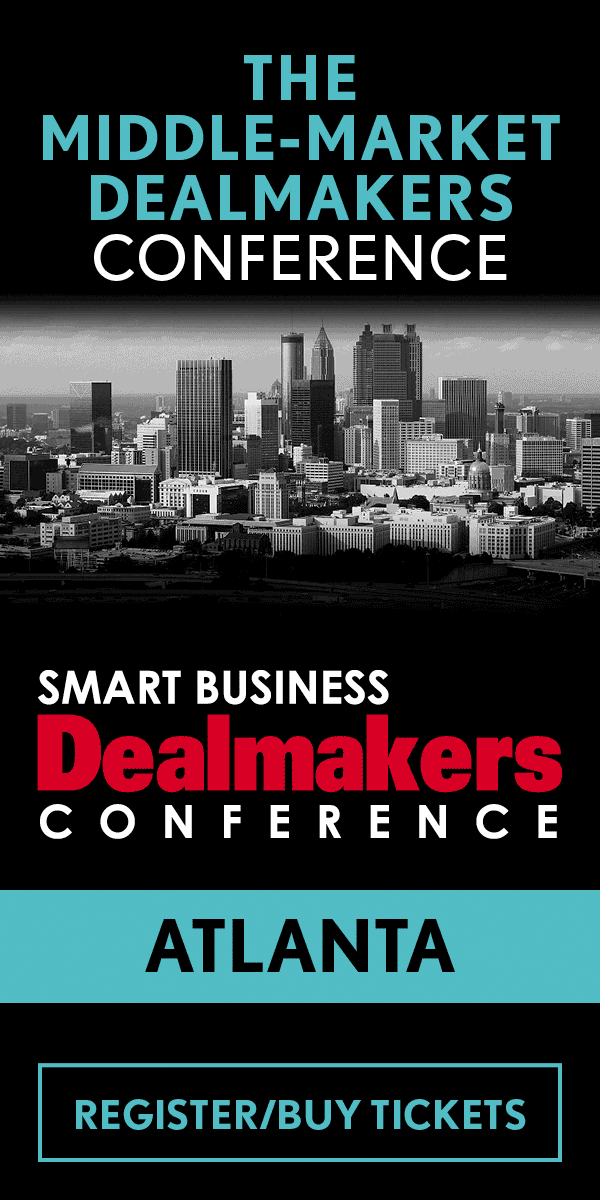MGX Digital was a family run company. After 20 years, the owners decided they were ready to retire and were being vetted by a potential acquirer when COVID hit. Then, says CEO Charity Brueggemann, everything stopped.
The owners still want out, so Brueggemann struck up a conversation with a nearby CEO who completed an ESOP transaction about two years prior. She brought the information back to the owners, but they were unsure about the process. Brueggemann, however, continued.
“I know that the owners of this other company, it was very, very beneficial to them,” she said at the St. Louis Smart Business Dealmakers Conference. “There's huge tax benefits to the owners. There's huge tax benefits to the company, post transaction. And they felt that, they had a good leadership team in place. Same for our company, we had a really good leadership team in place.”
Eventually, the owners agreed, and they moved forward with the ESOP.
Something Brueggemann says is important when going through with an ESOP is to get the right advisers.
“It's a very, very complicated transaction,” she says. “There's a lot to it. Due diligence is probably not a whole lot different than in a typical transaction. We get a trustee who works on behalf of the company and needs that same kind of information. So, it was very similar. But in the end, the company then is owned by the employees.”
Within two and a half years after the transaction, she says the company has grown — doubling in size. Part of that growth is because the owners had been holding the company back.
“They were very risk adverse,” Brueggemann says. “And we were at a point in order to take the business to the next level, we had to take some risk. So, actually with them exiting, I was able to make decisions and be able to do things that I wouldn't have been able to do with them.”
Also, having employees that understand ownership has helped.
“We're very intentional of educating our employees — that's their financial education, that's understanding to them what EBITDA is, how does that work, how does valuation happen with a company?” she says. “Explaining to them for every dollar saved, if you get a six times multiple that's really $6 on our business. So, that really has resonated with the people in our company.”
The ESOP is also a chance to reward those who have been with the company for a long time.
“I have guys back there who will make $22-$25 an hour, and they've been with us since the beginning,” Brueggemann says. “And by the time they retire, they'll have hundreds of thousands of dollars in their ESOP. To me that is the best part. That's the whole reason to do an ESOP.”
An ESOP also keeps the culture and the family feeling to the business. But it also translated to financial benefits for the owner as well as the business.
“They got a very good valuation, a very good price for the company, and they pay no taxes. And we as an ESOP now do not pay taxes,” she says. “So, 30-40 percent of what normal companies would pay to taxes, now we can pay down debt. We'll be debt free in less than probably seven years. And then the money that we would normally be paying to taxes we’ll be putting aside for the employees who can then benefit. So, it's been a great experience. It was challenging, but I think it's been a win-win for everybody.”
The reason she thinks ESOPs are not more prevalent is a lack of education about them.
“Even the same with my owners, when I had mentioned it to them before, their first thought is, that means that they got to finance the whole thing and they're not going to get the same price as if they took it to market,” Brueggemann says. “And that just simply is not true. And I didn't have the education when I first approached them with it. And I was just like, OK, make sense. But once I learned what an ESOP really was, and what it meant for not just the employees, but the owners, I can assure you, they came out on top. They did not take anything less by doing an ESOP, but they got everything they wanted — they got the financial side, they got to keep the culture.”
Being an ESOP, she says, is also a great recruitment and retention tool. She says not only will employees be able to cash out when they retire, they also still have a 401(k) that they can contribute to. They’re also empowered as employee owners to contribute more to the business, though just how much they can contribute had to be explained.
“At the end of the day, you still have someone at the head of the ship,” she says. “I'm still the CEO, I still have to make the decisions. So, it wasn't all rainbows and all that. We had to dispel what that means as an employee owner, that, yes, you're going to get a say you're going to get a vote. But you still have to have a leader at the end of the day.”
But overall, she says it’s been very beneficial.
“It's been a very big key in recruiting people and explaining how we operate the ESOP,” Brueggemann says.




